With reference to the experiment shown below answer the following questions

The indicent ray and emergent ray are
perpendicular to each other
parallel to each other
collinear
none of the above
The correct Answer is:B
Due to parallel lateral surfaces
Topper's Solved these Questions
Similar Questions
A ray of light enters a spherical drop of water of refractive index p as shown in the figure.
An expression of the angle between incidence ray and emergent ray (angle of deviation) as shown in the figure is
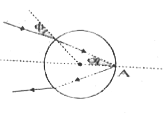
View SolutionA ray of light enters a spherical drop of water of refractive index μ as shown in figure.
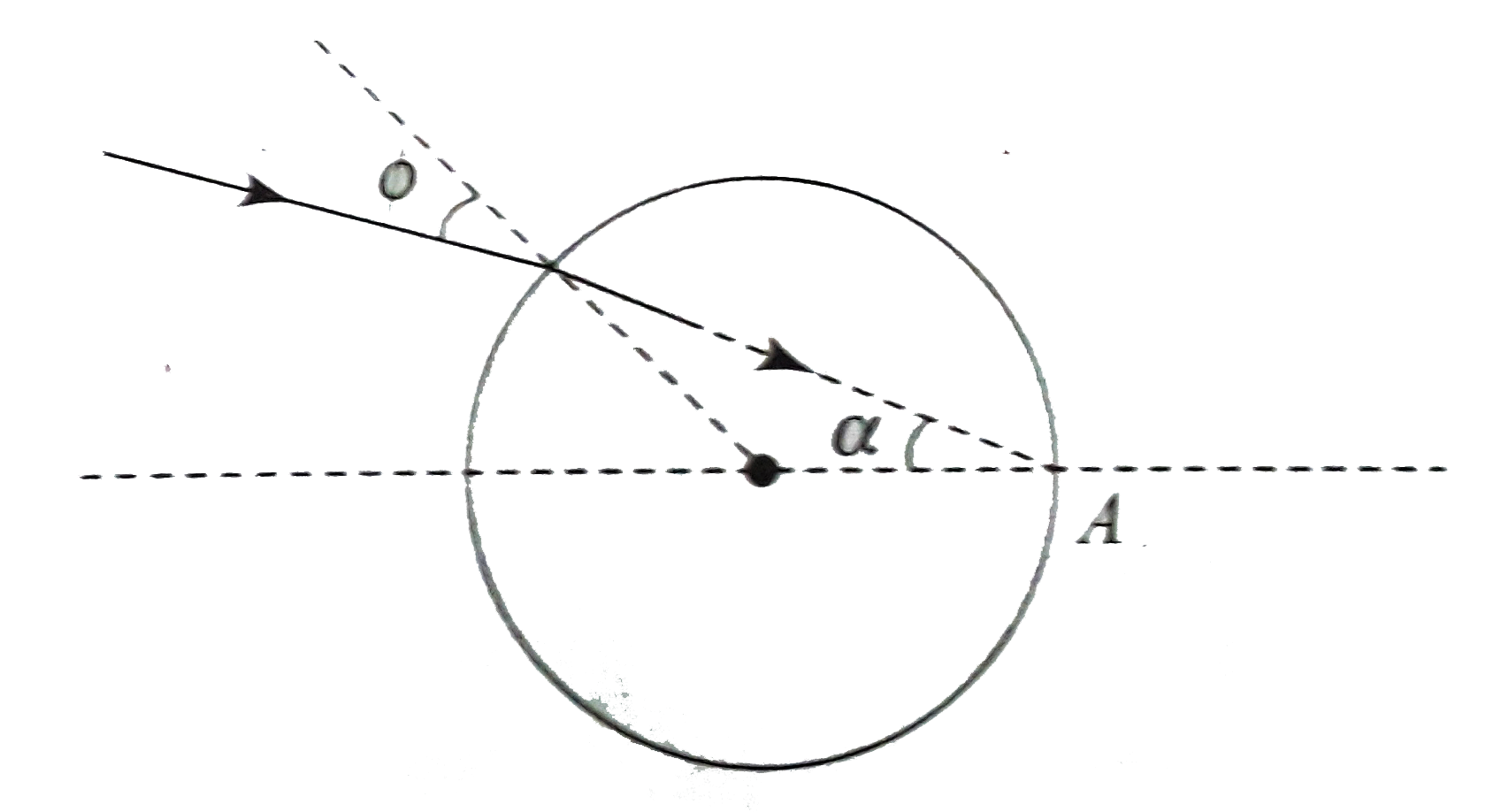
Q. An expression of the angle between incident ray and emergent ray (angle of deviation) as shown in figure.
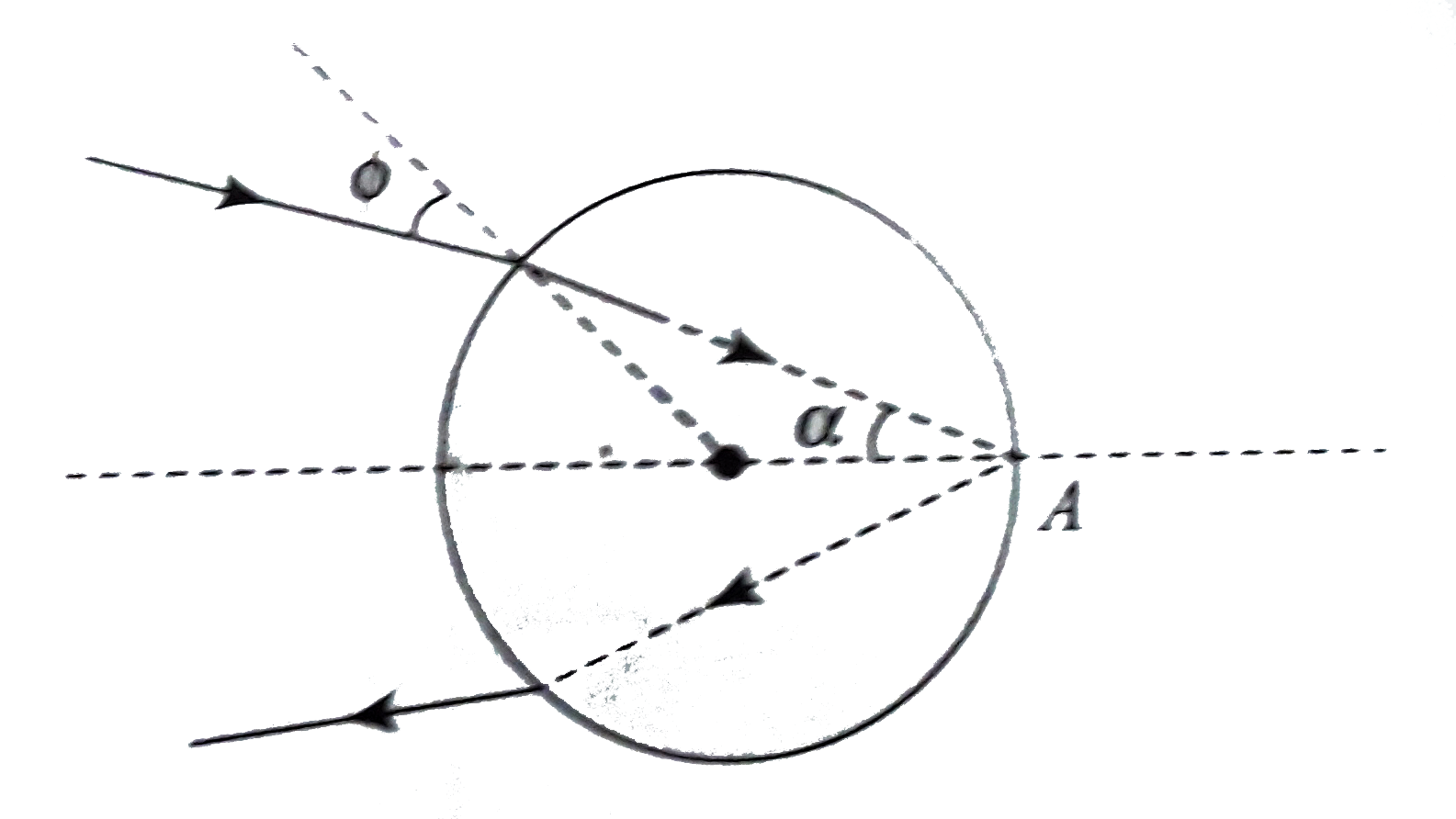
View Solution
Knowledge Check
A ray of light enters a spherical drop of water of refractive index p as shown in the figure.
An expression of the angle between incidence ray and emergent ray (angle of deviation) as shown in the figure is

 A0∘BϕCα−ϕDπ−4α+2ϕ
A0∘BϕCα−ϕDπ−4α+2ϕAn optical instrument is placed inside the box as shown below. The incident rays and emergent rays are also shown. The optical instrument could be _______.
 Aonly a plane mirrorBonly a convex mirrorConly a concave mirrorDboth plane mirror and convex mirror
Aonly a plane mirrorBonly a convex mirrorConly a concave mirrorDboth plane mirror and convex mirrorA ray of light enters a spherical drop of water of refractive index μ as shown in figure.

Q. An expression of the angle between incident ray and emergent ray (angle of deviation) as shown in figure.
 A0∘BϕCα−ϕDπ−4α+2ϕ
A0∘BϕCα−ϕDπ−4α+2ϕ
A ray of light XY passes through a right angled isosceles prism as shown below.
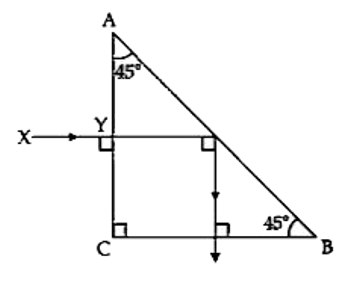
What is the angle through which the incident ray deviates and emerges out of the prism?
View SolutionObserve the figure given below, and answer the question.
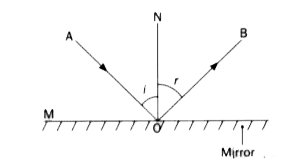
What is the ray AO called?
View SolutionWhen rays of light are incident on a glass slab, then the incident ray and emergent ray are ____ to each other.
View SolutionWhen rays of light are incident on a glass slab, then the incident ray and emergent ray are ……….. To each other.
View SolutionRead the paragraph and the figure carefully and answer the questions.

The figure shows a constant deviation prism ABCD. The incident ray is PQ and the emergent ray is ST. Although it is made up of one piece of glass, it is equivalent to two 30∘−60∘−90∘ prisms and one 45∘−45−90∘ prism. The angle θ1 is the angle of incidence on face AB. The path of the ray inside the prism is indicated in the figure.
For this prism, μ=2sinθ1
The total deviation of the incident ray when it emerges out of the prism is
View Solution
